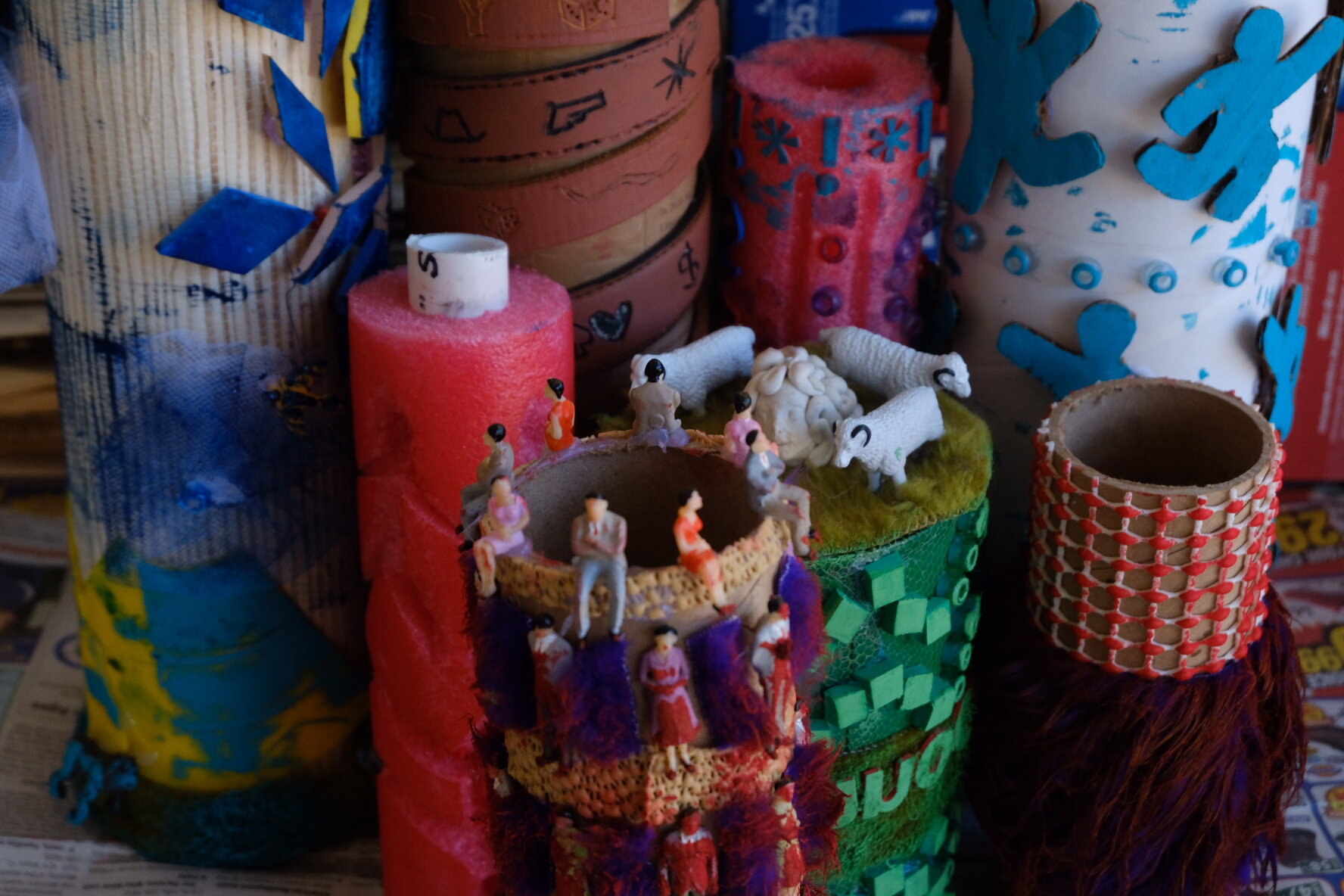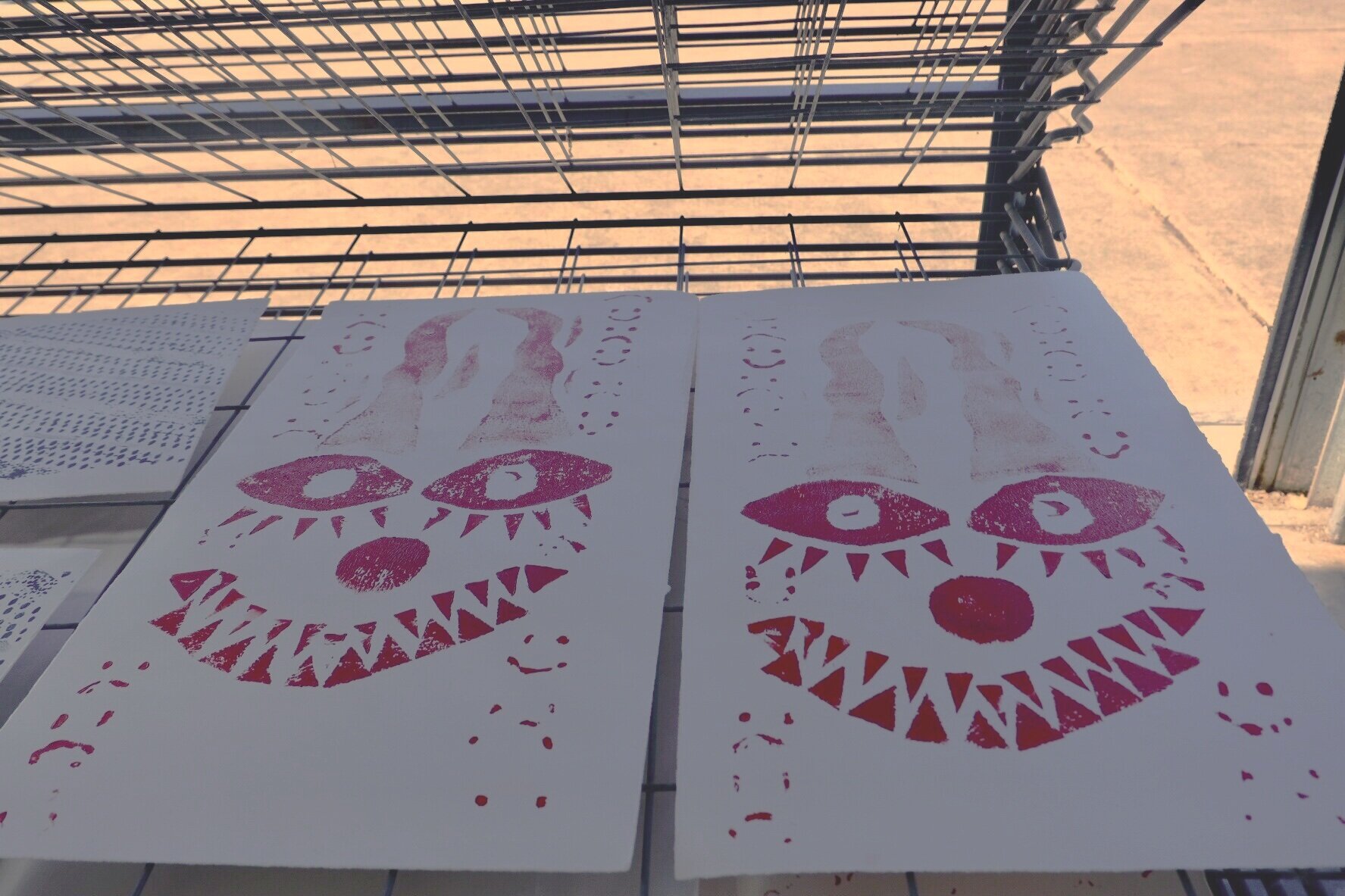Teaching with The Oxbow School
The Oxbow School is a private & independent semester-exchange art program for 10-12th grade and gap year students. The School’s mission is to strengthen students’ abilities in creative and critical inquiry by combining rigorous studio art practice with innovative academics. Oxbow’s goal for their students is that they develop a stronger sense of identity, self-worth, and the confidence to embrace the responsibility for their own learning and lives. You can visit their website here to learn more.
For two consecutive years, I served as the Head Faculty and Printmaking Instructor for Oxbow’s Summer Art Intensive. Students in this program lived on campus with approximately 40-50 of their peers, many of them experiencing an arts-centric education for the first time. Each session introduced students to fundamental art principles, rotating through 4 studio experiences overall (Painting/Drawing, New Media, Printmaking, and Sculpture), and culminating in a self-directed final project. Featured here a few examples of studio coursework & student projects from my time with the Oxbow School.
Symbolism & Screenprinting
This fundamentals lesson explores the power of symbology through the screenprinting process. From national flags and magic sigils to mainstream branding/identity logos (Nike, Gucci, Apple, etc), students study the many symbols that flood our world. Where do they come from? Who designed them? What purpose do they serve and how are they activated? After becoming familiar with the composition and anatomy of various symbols, students develop their own original symbol and learn how to translate it to print.
The outcomes/objectives of this class are as follows:
Develop an original sign, symbol, sigil or logo
Analyze the cause/effect relationship of symbols of all kinds (pictograms, brand logos, religious icons, etc)
Study anatomy and composition of well known and uncommon symbols alike
Practice the translation of sketch > stencil > print using concepts of negative/positive image
Learn how to make a 1-color screenprint using the drawing fluid/ screen filler method
Pull 1-sided prints on 8x5” fabric sheets
Floating Ink
This introductory lesson provides a brief overview of printmaking through the ages, leading up to a 12th-century form of Japanese monoprinting known as Suminagashi or “Ink Floating”. This practice, which requires little more than paper, ink, water, and air, was used primarily for paper marbling and later popularized in Turkey, Persia, and Western Europe to make endpapers in bookbinding. Through repetition of the marbling process, students learn a basic yet essential element of printmaking: Balancing intention and chance. Each student is expected to produce 5+ unique single-sided sheets of marbled paper AND walk away with an understanding of how breath, energy, action, movement, and meditation emerge in art-making.
Project Cylinder
They say there is no need to reinvent the wheel... But what might we learn by redesigning it? For centuries, a deceptively simple shape known as the CYLINDER has revolutionized the way we work, the things we create, and the stories we tell. From ancient Assyrian cylinder seals to the modern-day offset printing press, rotating wheels of assorted shapes and sizes have been used in art, industry, and all the in-betweens. In this class, collaborative pairs will be challenged to construct a cylinder that is equal parts sculpture and print matrix using non-traditional and found materials. Students will walk away with a collaborative print-generating-sculpture and an edition of original prints on paper.
The outcomes/objectives of this class are as follows:
Experience pairing an abstract concept with the process of making
Experience working with obstructions/limitations
Practice the translation of sketch > stencil/matrix > print/relief
Practice collaborating with 1 or more classmate
Exercise in problem-solving (not all steps between A->B are spelled out)
Learn to make use of non-traditional materials
End product is less important than the process
This class was developed and co-taught in collaboration with Mikhaila Quezada.
Final Projects
The summer art intensive final project is an opportunity for students to conduct a self-guided exploration of whatever mediums, ideas, or processes that move them over the course of one week. Before starting, students are expected to conduct in-depth preliminary research into the material and conceptual challenges involved in their pursuit and share a written proposal with a faculty member for review and discussion. Featured here are a few examples of the final projects developed by my students in the printmaking studio.



































